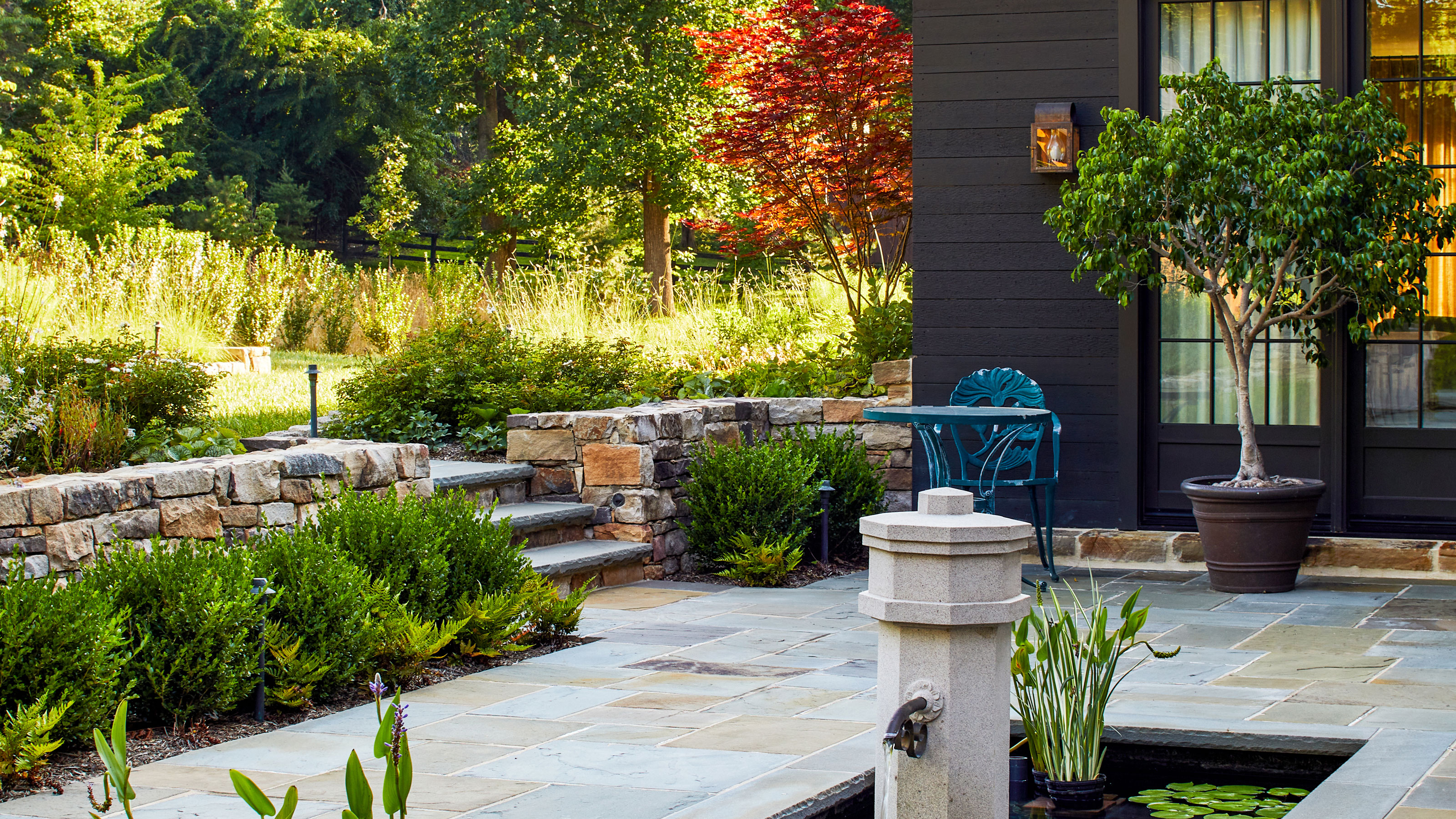
Not all trees thrive in containers. The best trees for pots are those that only reach certain heights and that can survive living in slightly confined spaces.
Fortunately, there are plenty of options out there if you do want to make a bit more of a statement in your pots, but container gardening with trees does come with its own challenges. "Potted trees need a big container, regular watering, and a sheltered spot if you want them to remain happily potted for several years," landscape designer Dan Cooper, tells us.
Choosing the right tree is the other half of the battle, and these 15 are all solid choices for your container garden.
1. Pear Tree
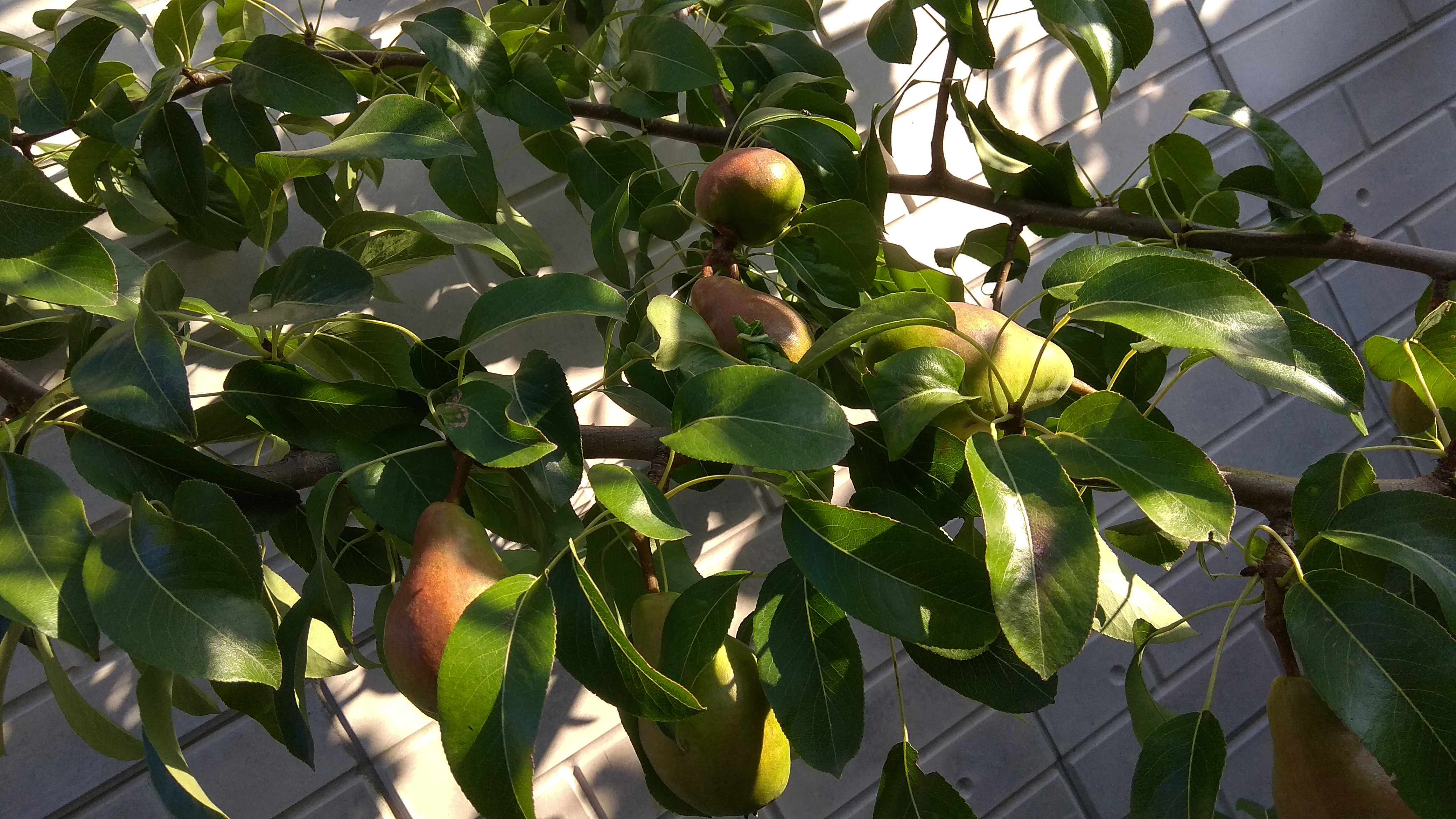
Pear trees will most certainly get a few heads turning, as a good fruit tree for growing in pots, it's a good choice for a small backyard. "Pear trees, given proper care, can thrive in pots, offering delightful fruits with the right attention," says Reese L Robins, a gardening expert at Just Pure Gardening. "To grow one, begin with a spacious container, allowing enough room for root growth and ensuring adequate drainage. Use high-quality potting soil to provide the best foundation for your pear tree."
Next up position the tree in a spot with lots of sunlight. Ensure your plant gets around 6 hours of direct sun. Reese continues: "Maintaining consistent moisture levels is crucial for pear trees in pots. Ensure the soil is consistently moist, but avoid waterlogging, which can lead to root rot. Also, feed your potted pear tree with a balanced fertilizer just before the flower buds open."
The expert says you need to maintain your potted pear tree in its usual sheltered location, "such as indoors, on a covered porch, or within a protected area against a building in the winter months." She adds: "Ensure it remains in these areas to shield it from extreme cold and frost. To further safeguard against potential temperature fluctuations, you can use insulating material around the pot or add a layer of horticultural fleece. This extra precaution helps stabilize temperatures around the roots, preventing any damage caused by freezing conditions."
Hardiness Zones: 4-8
2. Star Magnolia
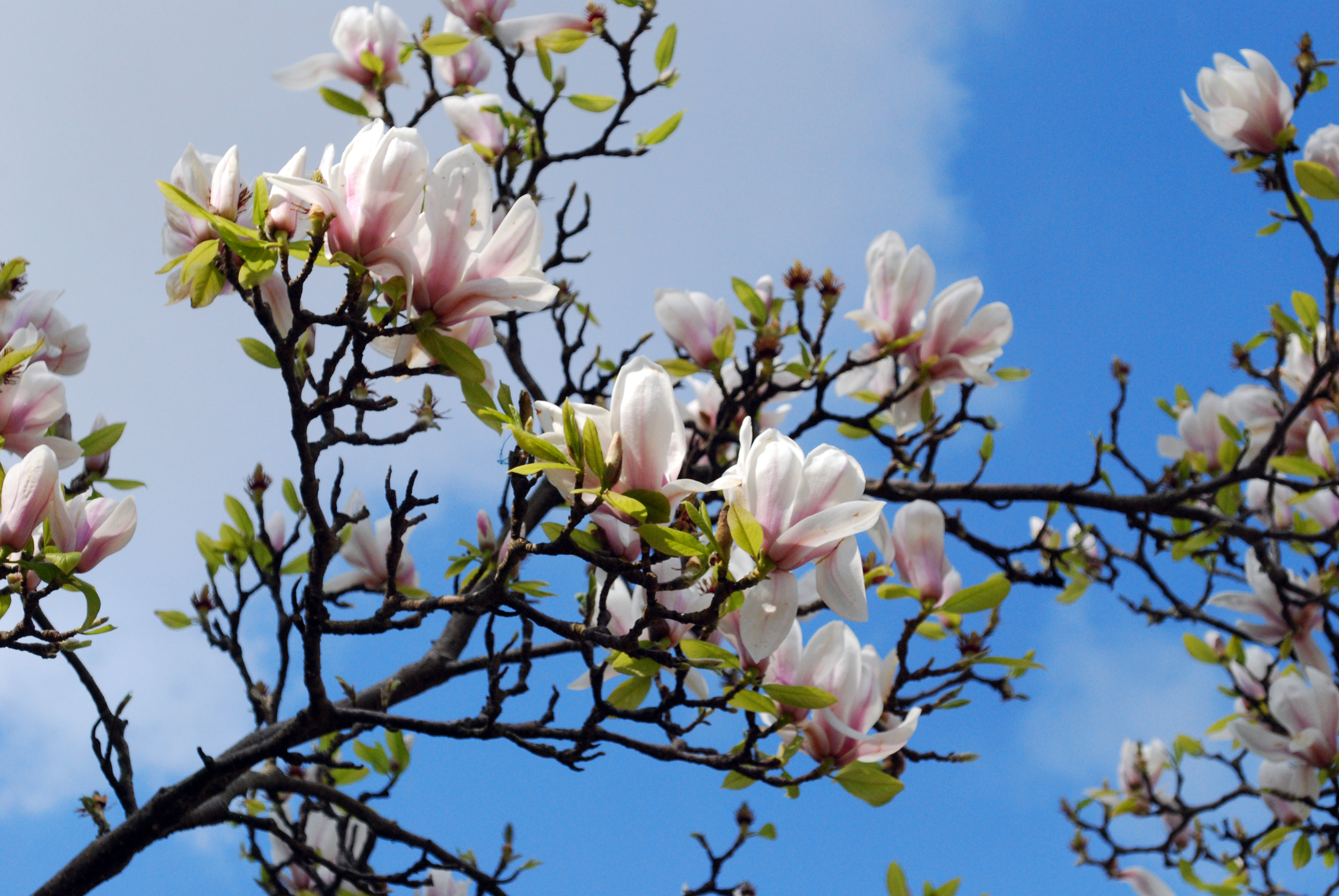
Another great contender is the potted star magnolia tree. With its enchanting star-shapes petals, it's a pretty tree with seasonal interest that will look great even in a small backyard. Reese tells us: "These ornamental beauties can flourish in pots, provided they receive the care and attention they deserve."
To get the best out of your tree, you'll need to choose an appropriate container and ensure you cultivate an the ideal environment for it. The expert says you will need to choose a well-draining potting mix and "look for a mix that's light and airy to ensure good airflow for the roots and to prevent waterlogging." Once that is one, make sure to position your pot in a location that gets at least 3 hours of direct sunlight daily. "This amount of sun helps the star magnolia thrive and grow healthily in a pot. Use a balanced, slow-release fertilizer in early spring, just before any growth appears. This will give the necessary nutrients for healthy growth without risking over-fertilization," Reese adds.
"Timing is crucial when it comes to pruning your star magnolia, Reese explains. "Optimal pruning time falls between mid-summer and early autumn when the leaves have fully opened. During this period, the focus should be on maintaining an open crown with a uniform shape."
When trimming, be sure to cut back to a fork or the trunk, as this will help the plant grow better and also make it look as good as new. As a final note, Reese tells us: "To provide extra insulation against potential temperature fluctuations, consider wrapping insulating material around the pot or applying a layer of horticultural fleece."
Hardiness Zones: 4-9
3. Dwarf apple tree

To add to your balcony garden, consider the easy-to-grow dwarf apple tree. This is a popular choice for home gardeners as it is resistant to fire blight, one of the biggest scourges of apples. The fruits tend to ripen in September with white flesh that is sweet, crispy, and juicy.
"This tree is perfect for growing in pots and can produce lots of delicious fruit," says Richa Kedia, garden expert and founder of Simplifyplants. "It needs full sun and regular watering. Make sure to use well-draining soil and fertilize it regularly."
Hardiness Zones: 3-8
4. Weeping cherry tree

If you're wondering how to design a small garden with the perfect plants and trees, a great contender is the weeping cherry tree. This is more of an ornamental tree. While it can be prone to pests and diseases, with good care, ventilation, and light, it can live for decades.
"These trees are known for their beautiful pink blossoms and can add a touch of elegance to any outdoor space," says Richa. "They prefer full sun and need to be watered regularly. Use a pot with good drainage and keep the soil moist but not waterlogged."
Hardiness Zones: 5-8
5. Crape myrtle

This tree can provide your small garden or roof garden with year-round interest and color. The tree has bright flowers, colorful fall foliage, and attractive exfoliating bark in the winter. They are available in several sizes, from 2-foot shrubby dwarf varieties to towering trees, and are available in deep red and purple tones.
"This tree is known for its beautiful blooms and can be grown in pots," says Richa. "It prefers full sun and well-draining soil. Water it regularly and prune it to keep it in shape."
6. Olive Trees

The olive tree is pretty much bulletproof. Despite the Med vibes it instantly gives your backyard, they are surprisingly hardy when temperatures drop, best of all there are many gorgeous types of olive trees to choose from.
As you would expect, Olives is like a sunny and sheltered spot so ideal for urban gardens. They don't need lots of water but do keep an eye out that the soil doesn't get too dry and give it a little weekly water if it feels like it needs it. Ensure you turn the pot regularly so it grows evenly.
"Something we love about olives in pots is that you can change the look to suit your style of garden," says garden designer Dan Cooper. "Depending on how your prune (or don't prune) you can choose between a very formal lollipop tree, that you see flanking the front doors of elegant homes or for a more relaxed Mediterranean feel, let the plant do its thing and be sure to report it if it starts to grow too wild."
Hardiness Zones: 4-9
7. Lemon Tree
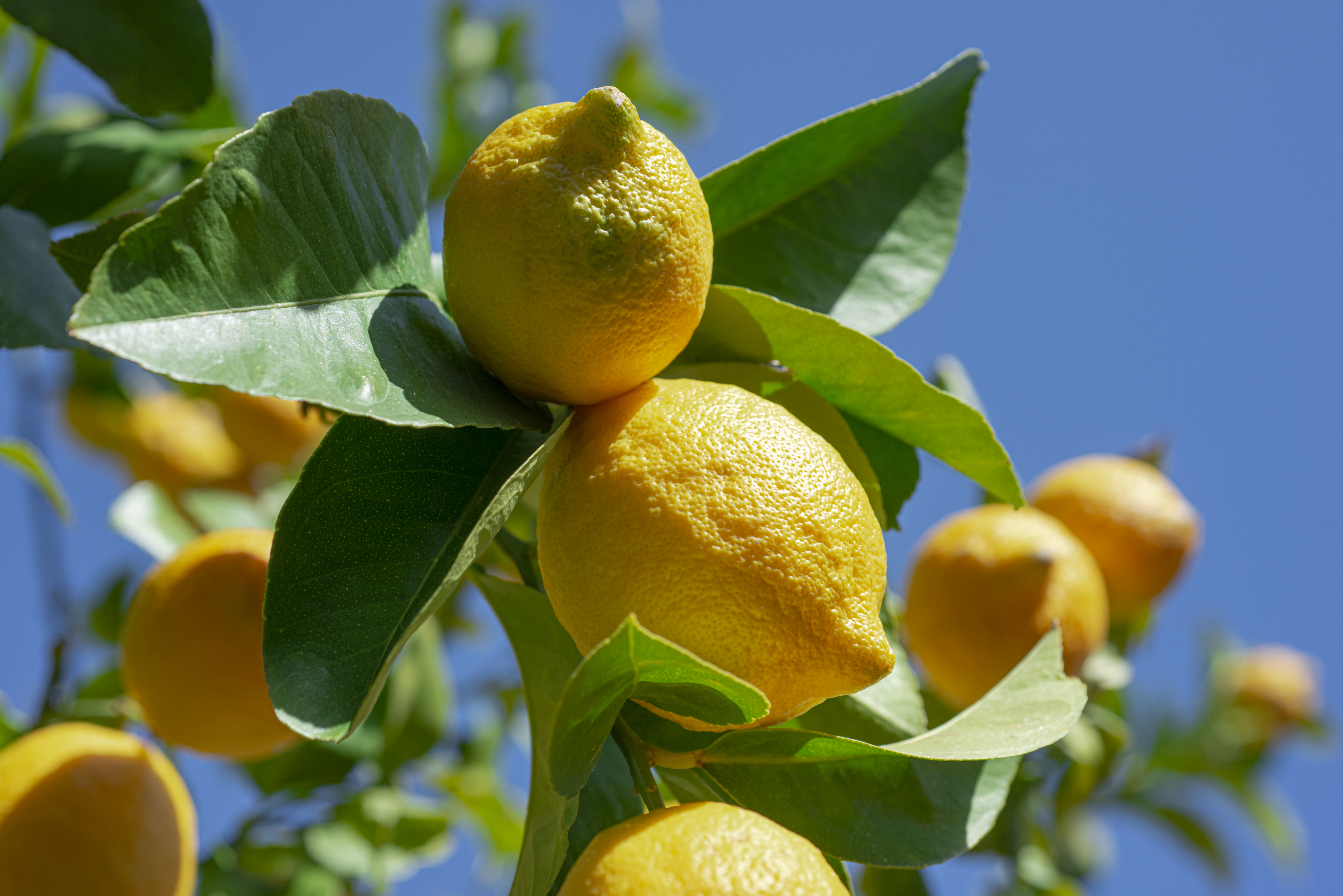
If you have a small backyard and want to ensure your pick of tree won't grow too big for your space, a surefire way to know is to look for dwarf varieties. Dwarf fruit and citrus trees will only grow to a certain height, so the best option is if you don't have lots of room or you plan to put it on a balcony.
"Dwarf lemon trees are a great pick," says Melanie Ward-Warmedinger, founder of Green Garden Living. "They look decorative, take up little space when there are space constraints, can produce a beautiful scent that lingers in warm weather, and can produce fresh fruit."
"They can be a little demanding though," says Melanie. "The secrets of success include: ensuring good drainage using a soil mix 1:1:1 of loam, leafmould, and horticultural grit. Place them in a sheltered, sunny spot next to a south or west-facing wall. Water and feed them using a citrus fertilizer once a week."
"Plant them in a terracotta pot that doesn’t hang onto moisture," says Melanie. "Protect them from cold weather over winter and repot in the spring every two to three years in a slightly bigger pot each time."
Hardiness Zones: 9-11
8. Fig Tree
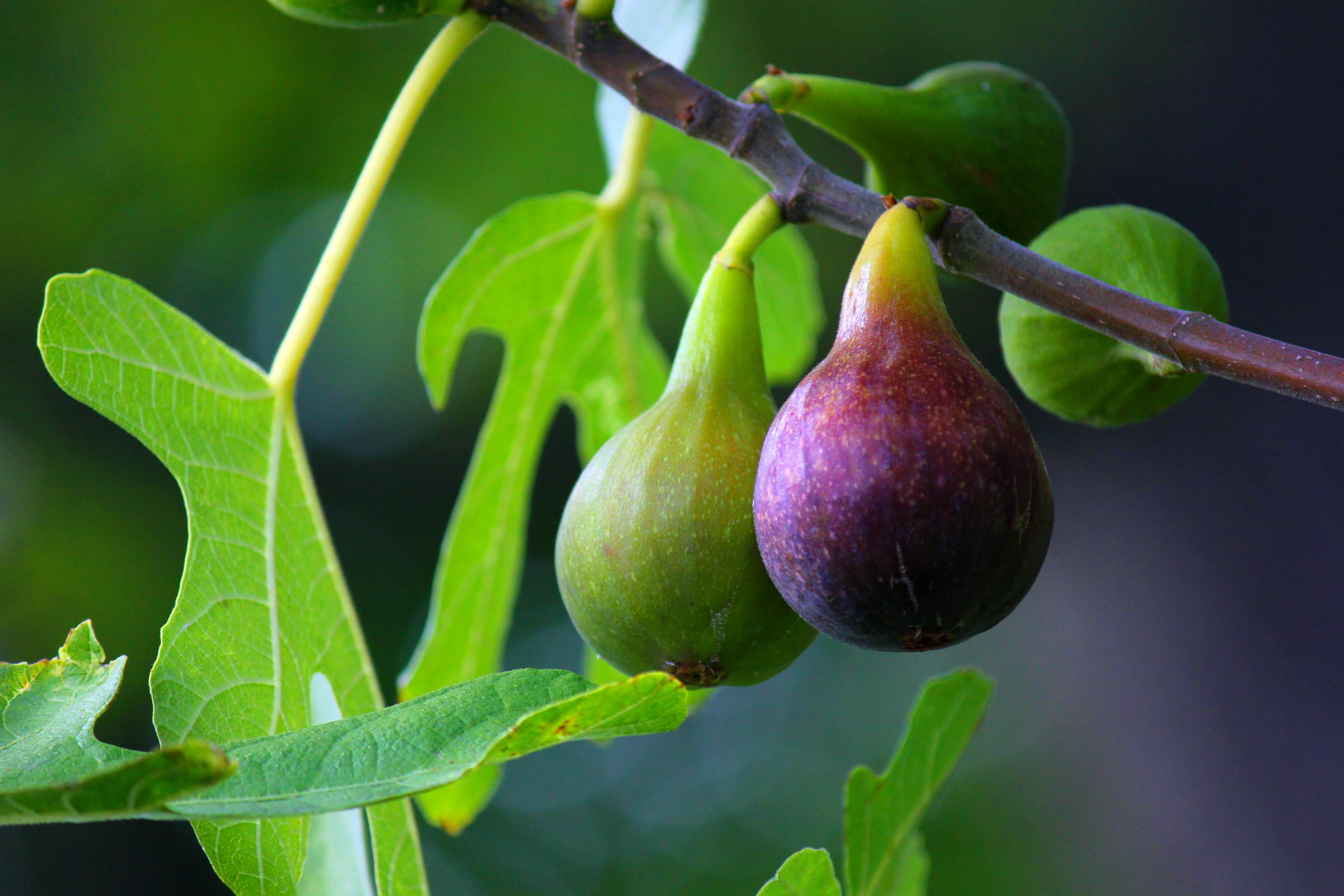
The key to growing a fig tree successfully in a pot is to pick the right cultivar. Some figs can grow huge and could be a plant to avoid in a small garden but choose a fig that's suitable for a container and they can thrive, adding a Mediterranean vibe to any space, not to mention the tasty fruits.
"Look out for Blanche, Brown Turkey, Verte, and Celeste cultivars, all of which are small-medium in size and will live happily in a pot," says Dan. Just be sure to plant them up in a large container and pick as sunny as a spot to you have — figs like direct sunlight and as much exposed to those rays as possible.
Hardiness Zones: 7-11
9. Italian Cypress
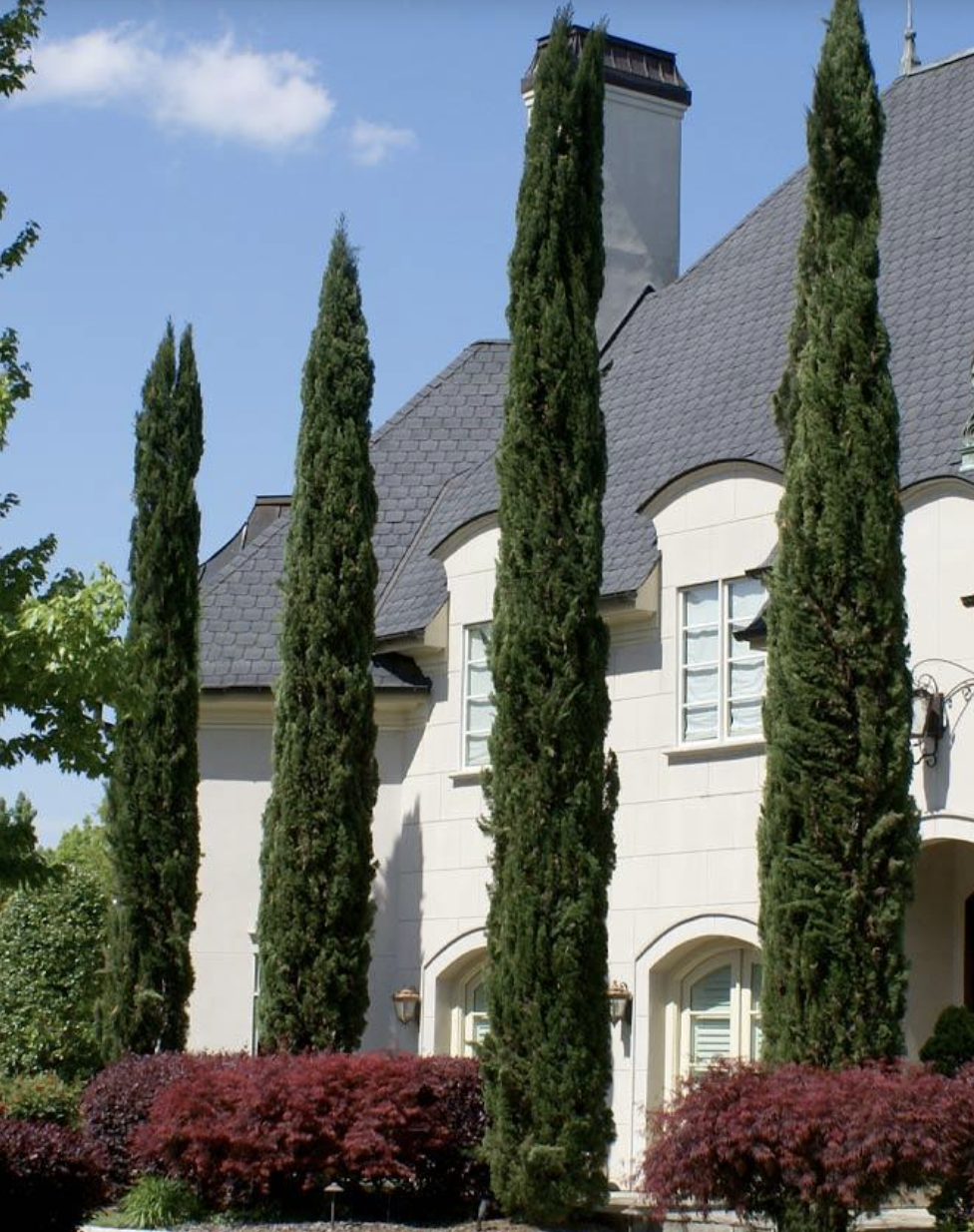
If you prefer a low-maintenance garden, Italian Cypress is incredibly hardy and one of the easiest trees to go in a pot. Similar to the olive tree, they give a garden a lovely Mediterranean feel and you can prune them into shape or let them grow into a more natural shape.
"They don't need much watering – once a week during the dryer months will be fine, and be sure to remove any cones if you want to keep that more classic formal shape," says Dan. Italian Cypress grows tall but can be pruned hard to keep them smaller. However, its iconic tall and slender shape can be ideal for adding privacy.
Hardiness Zones: 7-11
10. Japanese Maple

Japanese Maple, or Acer trees, grow happily in pots and give any outdoor space that calming feel of a Japanese garden. "They look glorious all year round and come in a variety of bold shades, from vivid greens to deep reds," says Dan. "Even when the leaves drop in the winter they look beautiful."
They aren't the hardiest of plants, and are a bit of a Goldilocks tree, not too much sun, not too little. And have the pot in a fairly sheltered part of your yard so that they aren't too affected by harsh weather.
With the right variety and when pruned correctly, the Japanese Maple can also make for one of the best shrubs for containers.
Hardiness Zones: 5-8
11. Mango Tree

Aside from being absolutely delicious, bringing a mango tree into your home will most definitely bring your Mediterranean garden ideas to life. Anastasia Borisevich, plant expert at Plantum, the app that helps identify plants and improves plant care, tells us: "Who doesn’t like a juicy, tasty, ripe mango? Great news for those who love this fruit—it can be grown at home!"
Anastasia says you can buy a dwarf Mangifera indica at your local garden store or grow it from scratch using a mango seed. "In this case, you’ll need to get a fresh mango at the market, eat it, and clean its seed from leftover fiber," she adds. "Place it in a glass of water and wait for the first roots to appear. After this, you can plant your future tree in a suitable pot with drainage holes."
The expert says you should fill the pot with a sandy-loam growing medium formulated for growing mangoes. Mango trees need full sun to thrive, so be sure to put it in an area of your home with lots of light!
Hardiness Zones: 10b-11
12. Avocado Tree
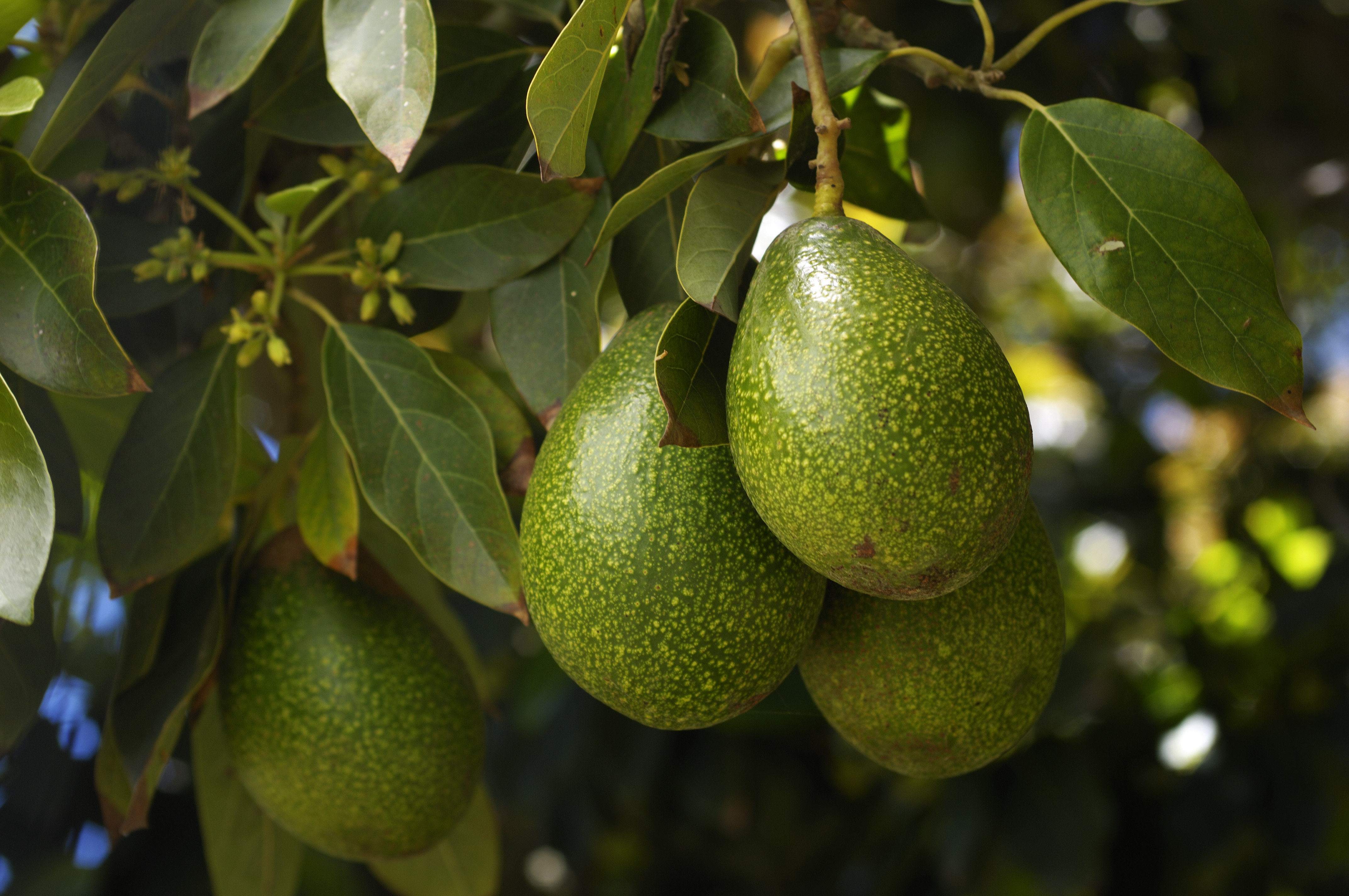
Avocados are precious fruit trees that you'll want in your garden. But remember, you'll need to be patient with this shrub and they are known to be quite high-maintenance.
"On average, it takes five years to start fruiting, but there is a trick not many plant lovers know; if you graft a fruit-bearing branch, you’ll significantly speed up your plant’s maturity," says Anastasia.
Aside from avocado carrying many health benefits, this plant is also ideal for shady gardens. So you can brighten up those dark spots with this ever so abundant shrub.
Hardiness Zones: 9-11
13. Jade Tree
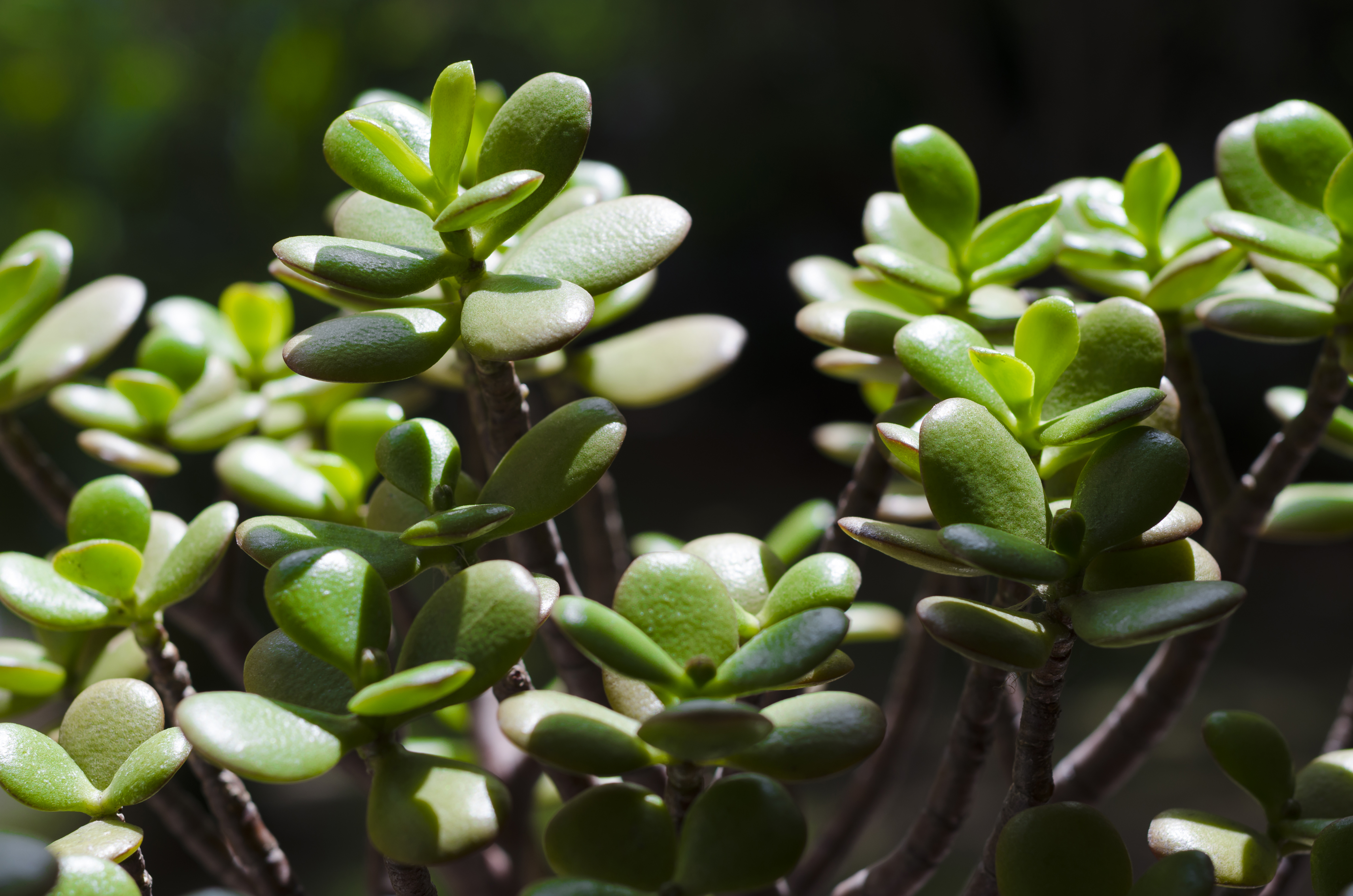
The Jade tree, also known by its name Crassula ovata — will certainly bring Zen into your green landscape. As well as this shrub being quite a common houseplant, it's also ideal for the outdoors. The jade tree is quite unique with its oval, thick leaves and shiny appearance.
Anastasia tells us: "One of its most appealing features is its ability to store water in its leaves, allowing it to withstand periods of drought. This, combined with the plant’s tolerance for neglect, makes it an excellent choice for those who may not have a green thumb or tend to forget to water their green pets."
Anastasia continues: "However, it’s important not to overwater the jade plant, as it’s susceptible to root rot. This succulent thrives in bright, indirect light, although it can tolerate some shade. It prefers well-draining soil and enjoys regular fertilizing — once a month during the growing season to promote healthy growth."
14. Arabian Coffee Tree
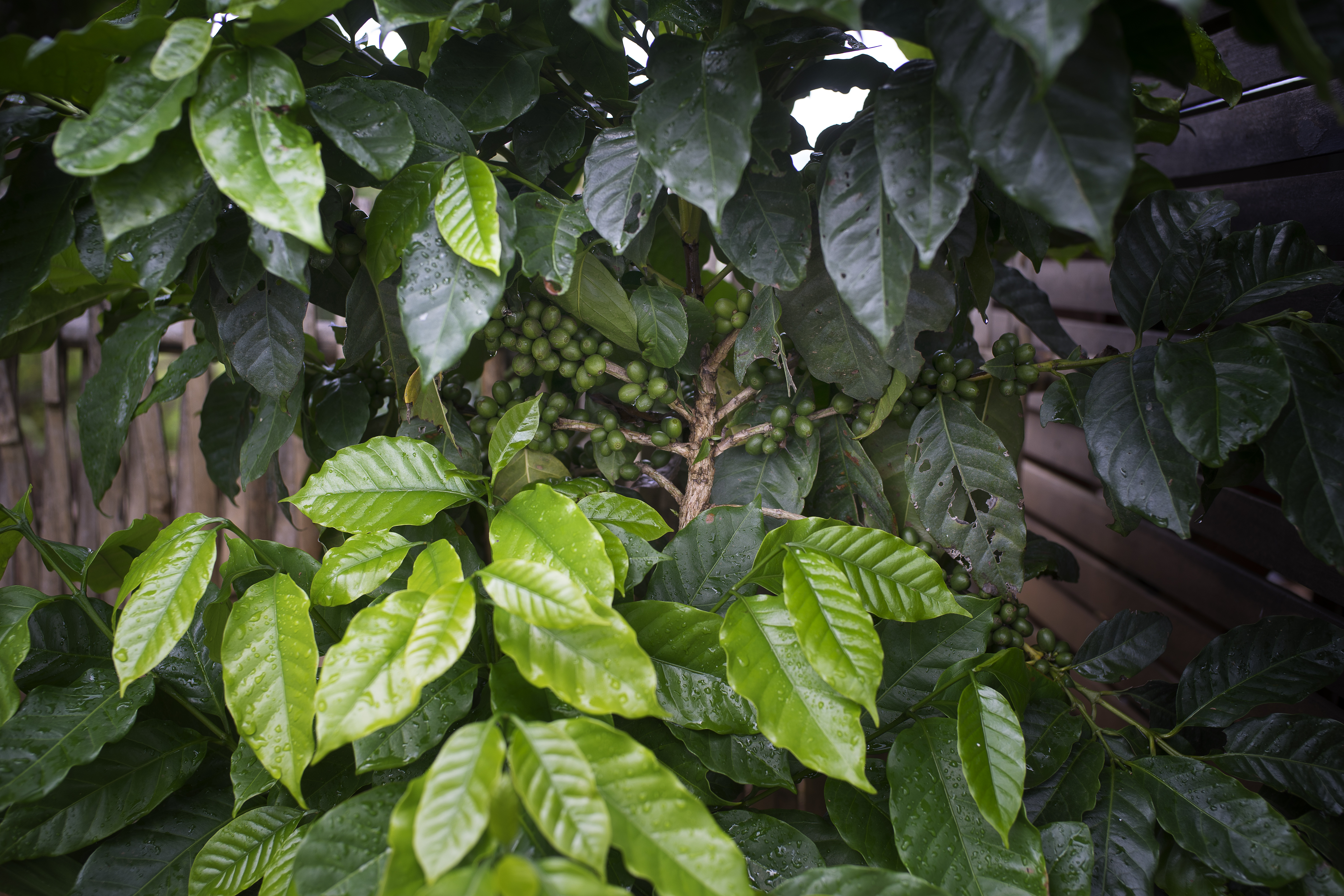
For plants that will date your yard, the coffee plant may just be your companion. As beautiful as this plant might smell, in order to keep it as fragrant as possible, you'll need to keep an eye on it. This high maintenance plant thrives in humidity and absolutely despises dry environments.
"Although Coffea arabica is tricky to keep content, the results of your hard work will definitely pay off! In addition to frequent watering and filtered sunlight exposure, you’ll need to keep an eye on humidity — it should be above 40% at all times," shares Anastasia. "Even if you’re not a coffee fan, this plant will make your life brighter with its astonishing tropical looks and a strong aroma. Before producing coffee beans, Coffea arabica grows out white aromatic flowers that later turn into red berries."
However, if you’re a pet owner, you'll need to be careful, as this plant is toxic to your beloved furry friends.
Hardiness Zones: 9-11
15. Croton Tree
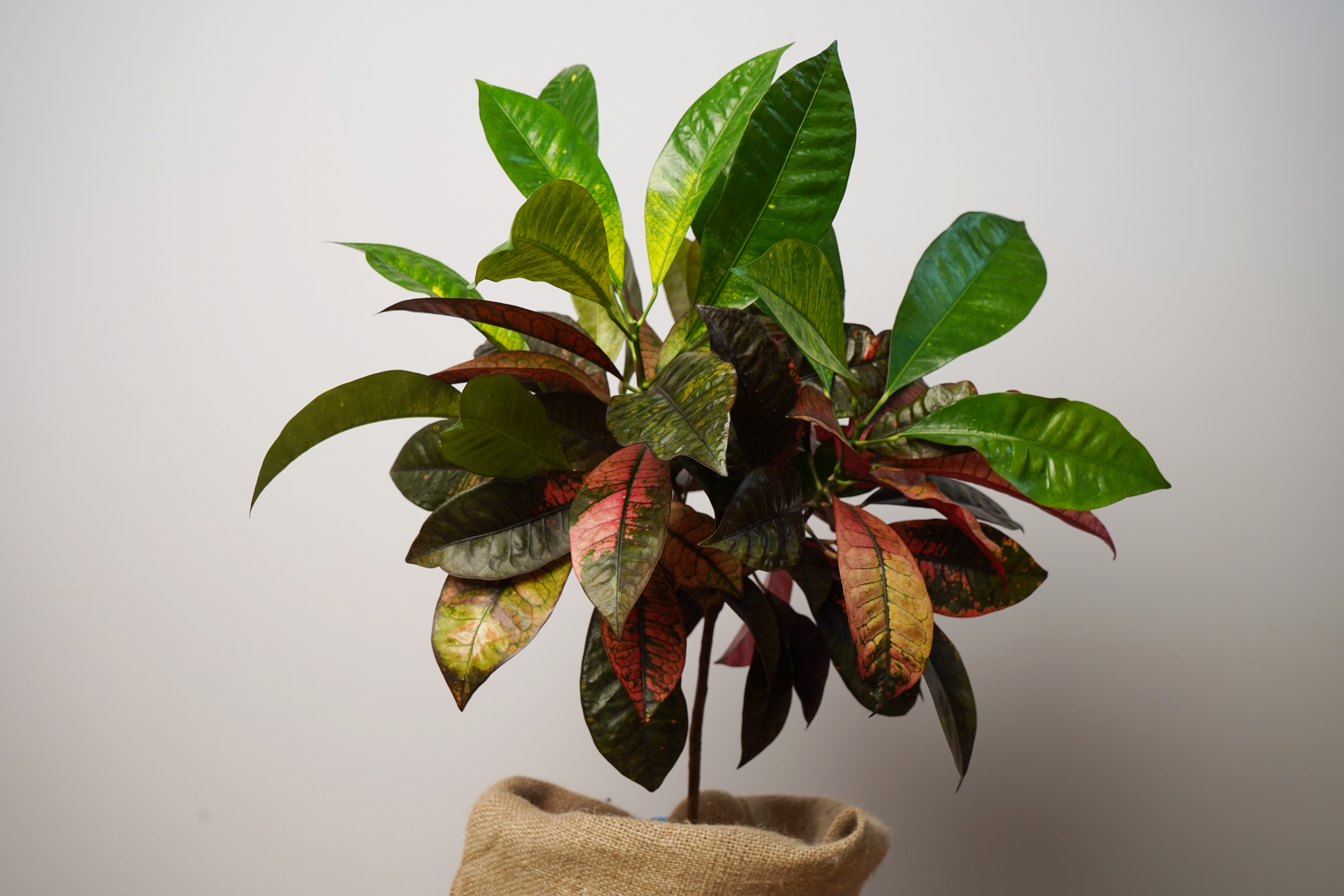
Want to add colorful front yard plants to elevate your homes exterior? Why not bring in The Croton Tree. It is truly a show-stopper. Its green and red leaves give it somewhat of a unique allure and stands out anywhere you place it.
Plant expert Anastasia tells us: "Codiaeum variegatum, most commonly known as the variegated croton, is a tropical shrub with large, thick leaves. Its natural habitat is in Australia, Indonesia, Malaysia, and even the western Pacific Ocean islands."
She continues: "Crotons are famous for their colorful purple, yellow, red, creamy, pink foliage with different patterns. They bloom with beautiful flowers throughout the year. Caring for this plant would be hard for a beginner because indoor-grown crotons are quite sensitive to temperature and humidity levels. But with proper conditions they can grow into lush trees."
As this plant comes from a tropical environment, it needs to be watered every 3-5 days in Summer and once a week in Winter. "You can mist it during the growing period. The soil should dry up between waterings, but don’t let it stay that way for too long," Anastasia notes.
Hardiness Zones: 11-12
FAQS
What trees grow best in containers?
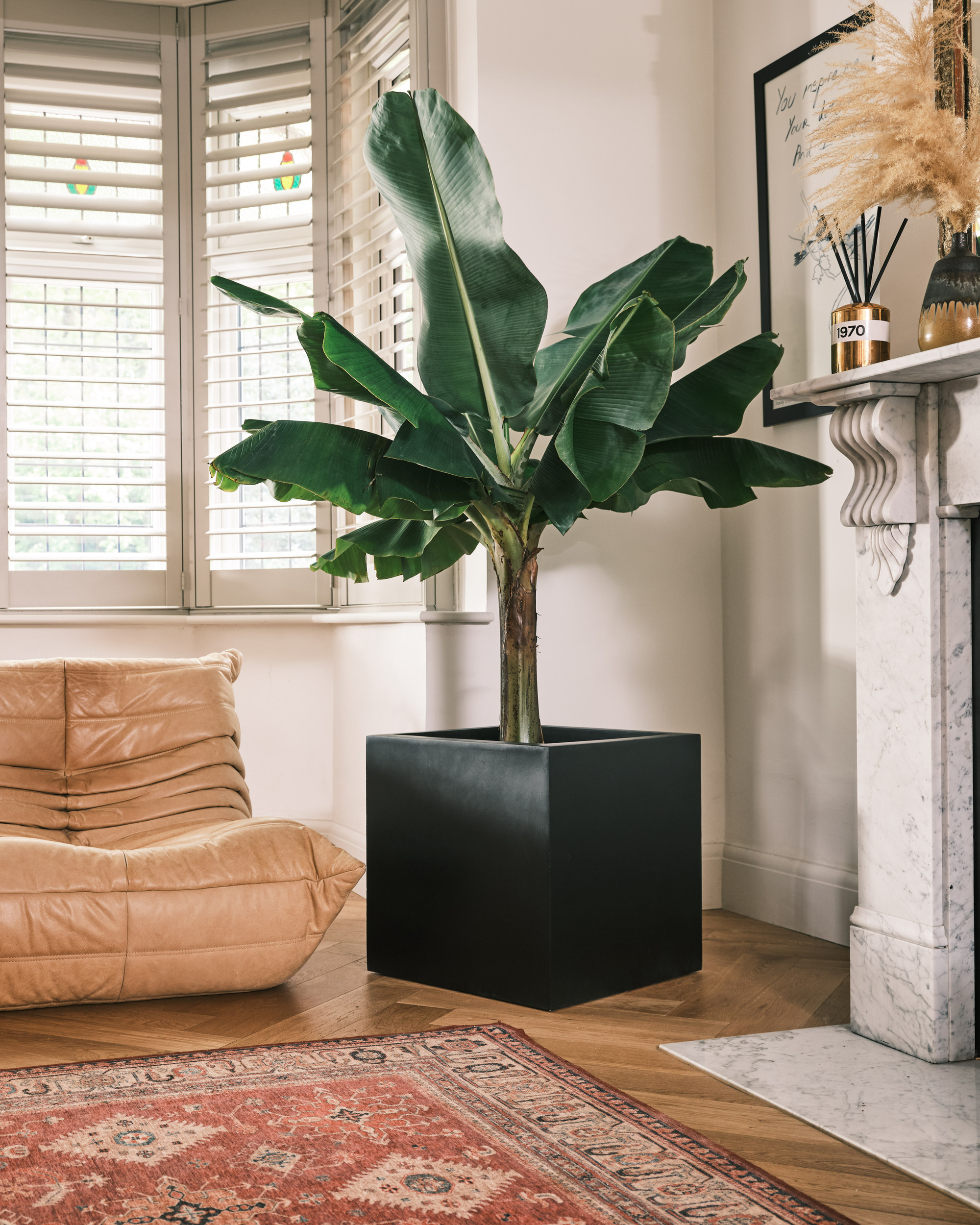
Lisa Tadewaldt, Tree Care Expert and founder at Urban Forest Pro tells us aside from the ones above, the Mugo Pine, citrus tree and banana tree thrives well in containers.
"If you live in a colder climate and have a sheltered area like a porch the banana tree and citrus tree brings a taste of tropics and something exotic to your landscaping," says Lisa. "The growth of these trees is usually stunted by the colder weather enough that they can live in the pot for an extended period."
She continues: "Myer Lemon is a good choice. Citrus will likely need to live inside except for in the summer. Banana trees can usually just be moved to a sheltered location and insulated over winter."
As for the Mugo Pine Tree, Lisa explains that this is a slow-growing pine. "It is one of the few evergreens that will stay small long enough to make to it worth planting in a pot. Some good varies for a pot are 'Compacta', 'Enci', ‘Mops’, ‘Pumilio’, and 'Gnome’."
Can trees survive in pots over winter?
Yes, they can!
Lisa tells us: "Most tree are going to do fine in a pot over winter. If you live in one of the lower growing zones for the variety, you are planting. For example, the tree grows in zones 5-8 and you live in zone 5."
In this case, Lisa suggests "moving the pot to a sheltered area and insulating the outside of the pot. This can be done in many ways for example, some people put the pot in a cardboard box and fill it with straw. Another method is to cover the outside of the pot with bubble wrap."
Do trees grow well in pots?
Yes, trees can grow well in pots; you just have to pick the right type. If you stick with slow-growing and dwarf varieties, they will be best suited to life in a container and won't grow too large. You want to avoid trees that are fast-growing as it'll be a lot of work to maintain.
Just like planting a tree in the ground, the success of the tree in a pot will come down to care and the positioning is right. Do your research on the needs of your tree and the bonus of pots is you can move them around your yard if the tree is not thriving in a certain position.
How do you care for trees in pots?
The key thing is watering. Trees in pots don't have any direct access to water, so even drought-resistant plants will need watering weekly, and potentially more in the warmer, dryer months.
Repotting is also a big part of container gardening. It's not like you'll have to do it all too often, but do keep a close eye on whether your tree is becoming rootbound – if so it's time for a bigger pot. It will depend on the type and how often you will need to report but approximately you shouldn't leave a tree in the same pot for more than 5 years.
You also may need to bring potted trees inside, but this again depends on the type and your climate. In warmer regions, trees will be able to stay out all year round, but in a cooler climate where temperatures tend to drop below 50°F, your pots will either need to be covered or brought indoors.







